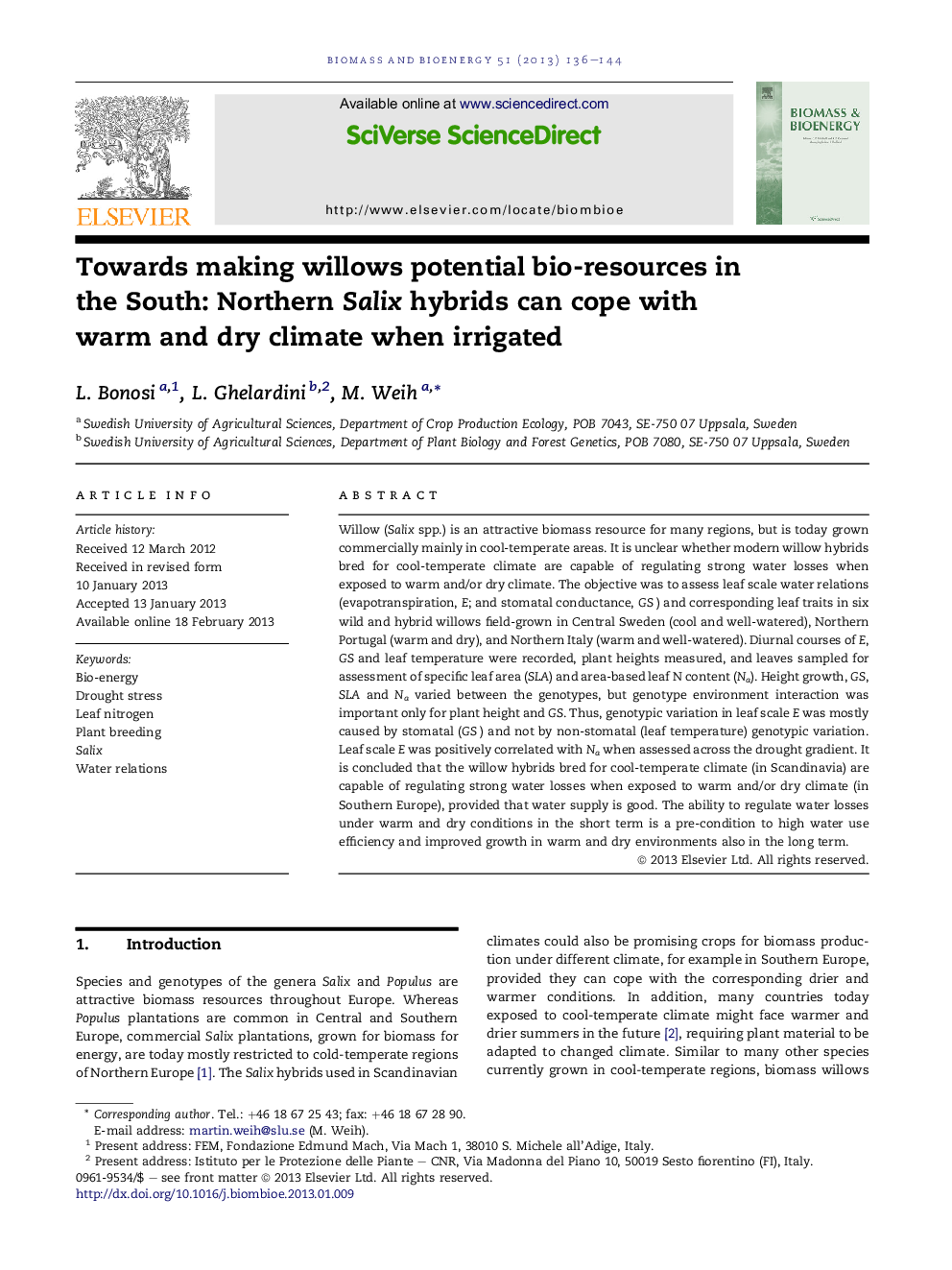| کد مقاله | کد نشریه | سال انتشار | مقاله انگلیسی | نسخه تمام متن |
|---|---|---|---|---|
| 677090 | 1459842 | 2013 | 9 صفحه PDF | دانلود رایگان |

Willow (Salix spp.) is an attractive biomass resource for many regions, but is today grown commercially mainly in cool-temperate areas. It is unclear whether modern willow hybrids bred for cool-temperate climate are capable of regulating strong water losses when exposed to warm and/or dry climate. The objective was to assess leaf scale water relations (evapotranspiration, E; and stomatal conductance, GS) and corresponding leaf traits in six wild and hybrid willows field-grown in Central Sweden (cool and well-watered), Northern Portugal (warm and dry), and Northern Italy (warm and well-watered). Diurnal courses of E, GS and leaf temperature were recorded, plant heights measured, and leaves sampled for assessment of specific leaf area (SLA) and area-based leaf N content (Na). Height growth, GS, SLA and Na varied between the genotypes, but genotype environment interaction was important only for plant height and GS. Thus, genotypic variation in leaf scale E was mostly caused by stomatal (GS) and not by non-stomatal (leaf temperature) genotypic variation. Leaf scale E was positively correlated with Na when assessed across the drought gradient. It is concluded that the willow hybrids bred for cool-temperate climate (in Scandinavia) are capable of regulating strong water losses when exposed to warm and/or dry climate (in Southern Europe), provided that water supply is good. The ability to regulate water losses under warm and dry conditions in the short term is a pre-condition to high water use efficiency and improved growth in warm and dry environments also in the long term.
► Willow hybrids bred for cool climate can cope with great water loss in warm climate.
► Great genotypic variation in leaf scale stomatal conductance - opportunity for plant breeding.
► No significant genotypic variation in leaf temperature.
Journal: Biomass and Bioenergy - Volume 51, April 2013, Pages 136–144